Shrimp are highly versatile bait you can use for both saltwater fishing and freshwater fishing. The possibilities are endless – you can opt for dead shrimp, live shrimp, or frozen shrimp. There is also a number of ways to hook and present this bait. It is up to you and your current needs!
No matter what choice you make, one thing is sure: you’ll have one of the best bait to attract fish. You can use shrimp when targeting saltwater species such as flounder, back drum, sea trout, bonefish, or tarpon, as well as freshwater species such as catfish, walleye, bluegills, and bass. They are readily available and can be found in most bait shops too.
As you can see, there is no reason for you not to try to catch fish with shrimp. So, let’s see how to do it the right way!
Freshwater Fishing With Shrimp
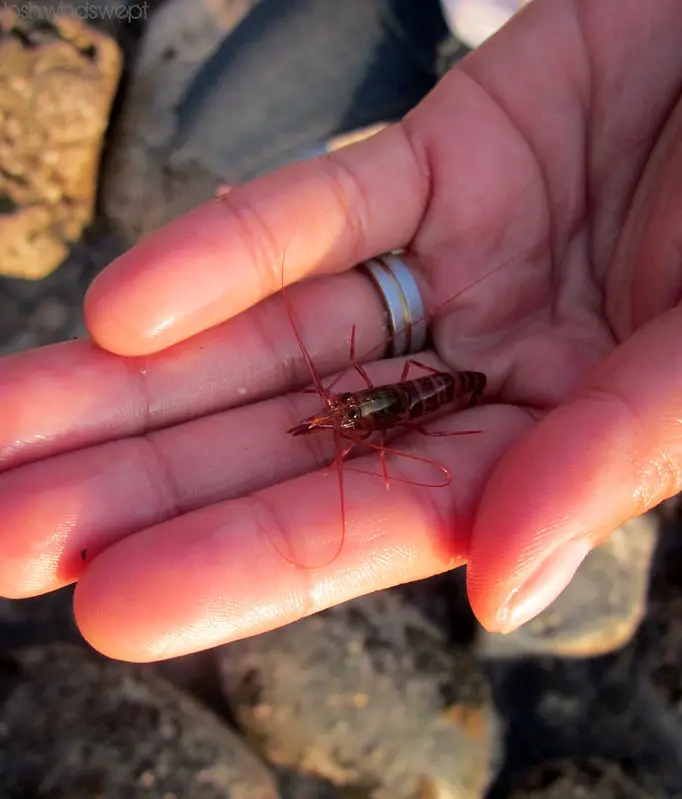
There are many ways to use shrimp for freshwater fishing, some more productive than others. I’ll provide some general rules and a few pro tips, but your success depends on your experience. So, my advice is to read this article, remember as much as you can, and then go find your own way to fish shrimp!
What Kind Of Shrimp Should You Use For Freshwater Fishing?
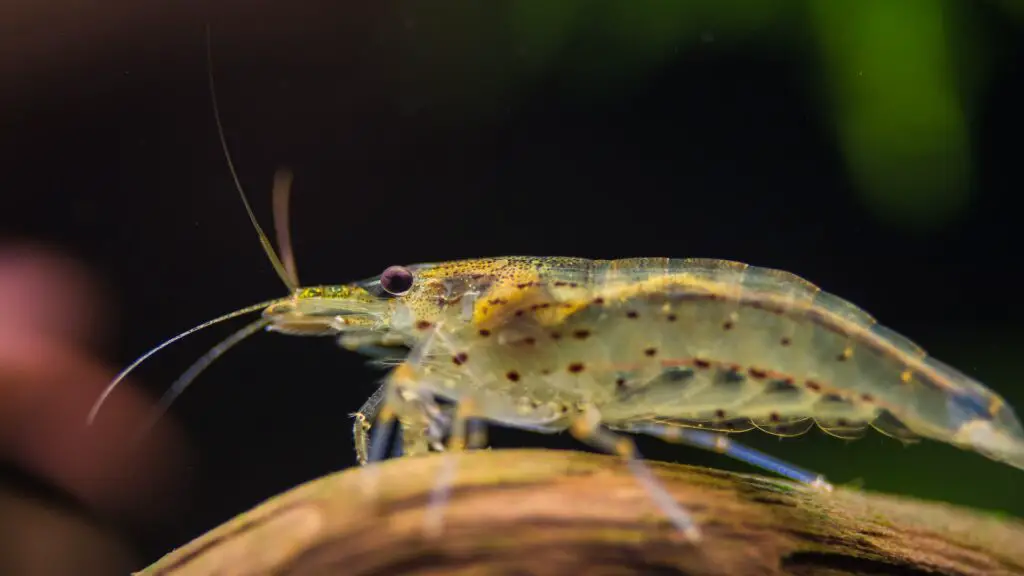
It is highly recommended to use freshwater shrimp for freshwater fishing. This should not be a problem since there are so many varieties in the world.
It is always best to present fish with the most natural bait possible, and that means you ought to use a shrimp variety that inhabits the waters you are fishing in. There is bound to be at least one!
You can purchase shrimp in local bait shops or catch them yourself, especially if you prefer live bait. If you opt for the latter, I recommend you start your quest in warm, murky water – trapping them is usually a breeze.
Many anglers prefer fresh shrimp over frozen shrimp or salted shrimp, but I suggest you try them all out and see what works best for you. As far as I have noticed, some freshwater fish, such as bass, pickerel, and walleye, prefer live bait, while others do not mind dead bait at all.
You can even try using saltwater shrimp to catch some freshwater fish species such as bluegills, bullheads, and catfish. Feel free to use both raw shrimp and cooked shrimp, as long as you remove the shell first.
If you want to keep your freshwater shrimp alive long enough to use it as live bait, watch the video below:
What Freshwater Fish Can You Catch With Shrimp?
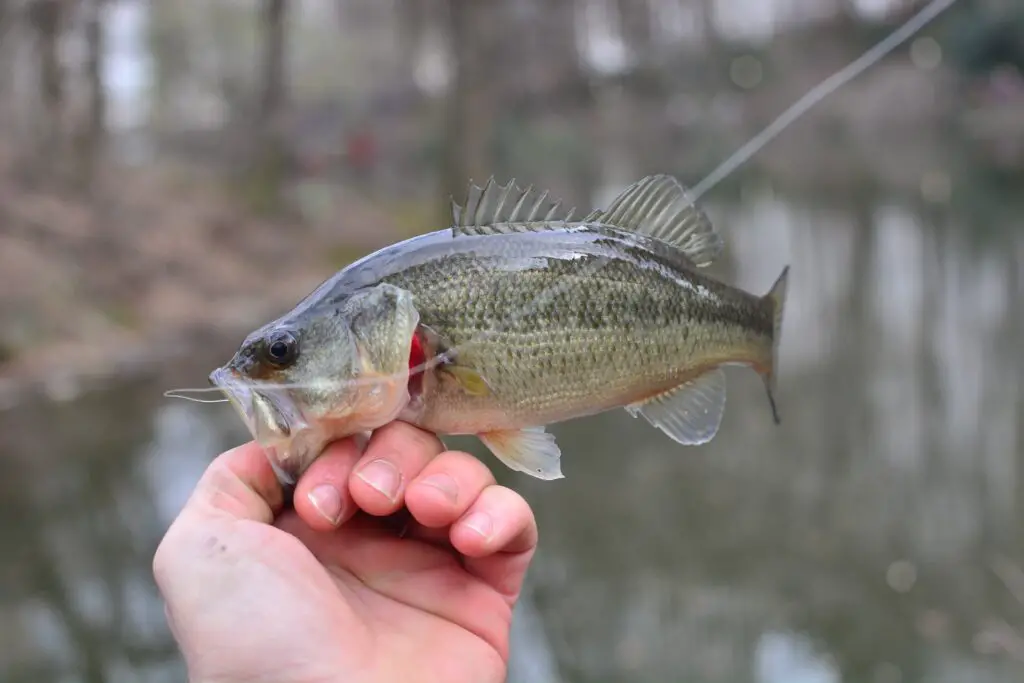
The choice of fish you can catch with shrimp is somewhat limited by the type of lure you choose to use. Dead and frozen bait appeal to some fish species, while live bait appeal to others.
For example, if you choose to use a live freshwater shrimp, you have the best odds of hooking some of the following freshwater fish species:
- Bluegills
- Trout
- Crappie
- Different types of bass
- Walleye
- Catfish
- Bullheads
- Yellow perch
- Chain pickerel
If you are using dead saltwater shrimp, you have the best odds of catching the following scavenging type fish species:
- Bluegills
- Common carp
- Bullheads
- Different types of catfish
When & How To Use Shrimp For Freshwater Fishing?
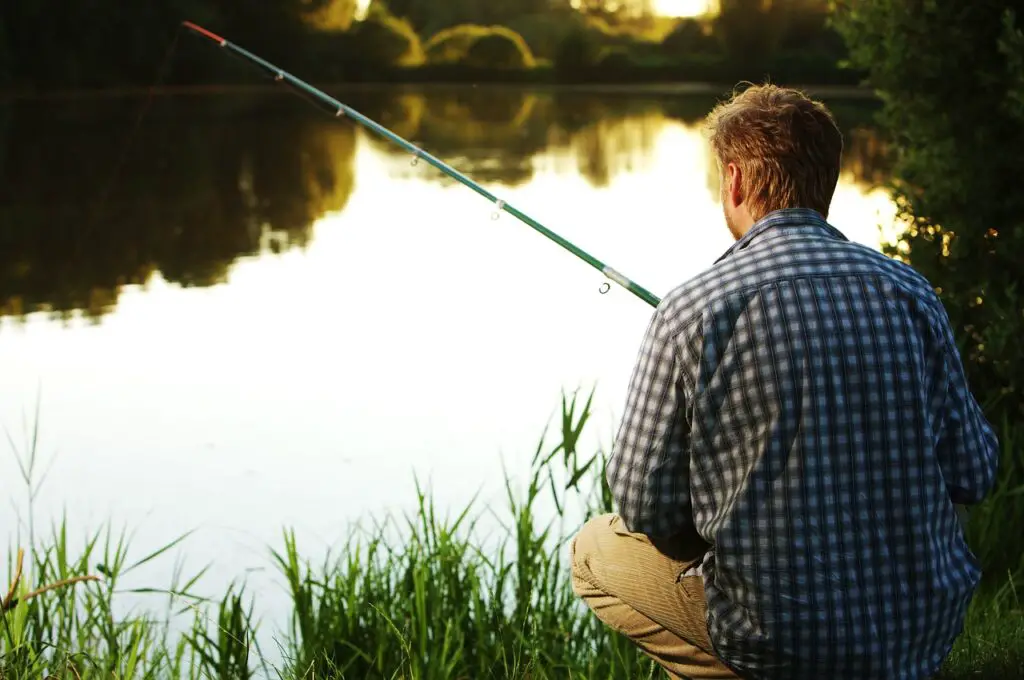
You can use shrimp in many water conditions; however, some work better than others. I have consulted a few experienced anglers and made a list of conditions that make up a perfect setting for shrimp fishing:
- Fish in the water that is stained and slow-moving (shrimp do not work in very clear water, except when catching bluegills).
- Fish near the shoreline. Freshwater shrimp usually inhabit shoreline vegetation, so your lure will appear natural and non-threatening.
How To Hook Your Shrimp For Freshwater Fishing?
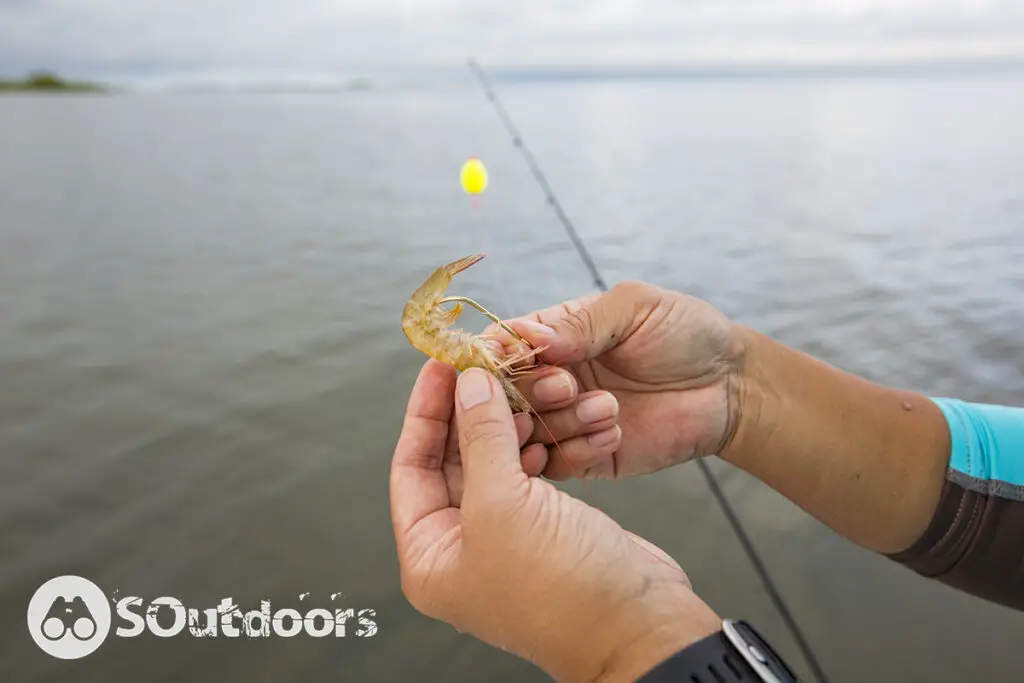
The best method to hook a shrimp is determined by your chosen fishing technique:
- Casting for cruising fish
Hook a live shrimp by breaking off its tail fan and threading the hook crosswise through its tail. Make sure you hide the entire shank and cover the hook eye. Once you remove the shrimp’s tail fan, it will give out a stronger scent and attract more cruising fish.
- Drift fishing
Puncture the shrimp’s tail through its last third. It will allow for a great casting distance.
- Bottom fishing
Insert the hook through the top of the live shrimp’s head. Be careful not to lose your bait, though – shrimp hooked this way tend to fall off quite easily.
The Best Tips For Freshwater Fishing With Shrimp
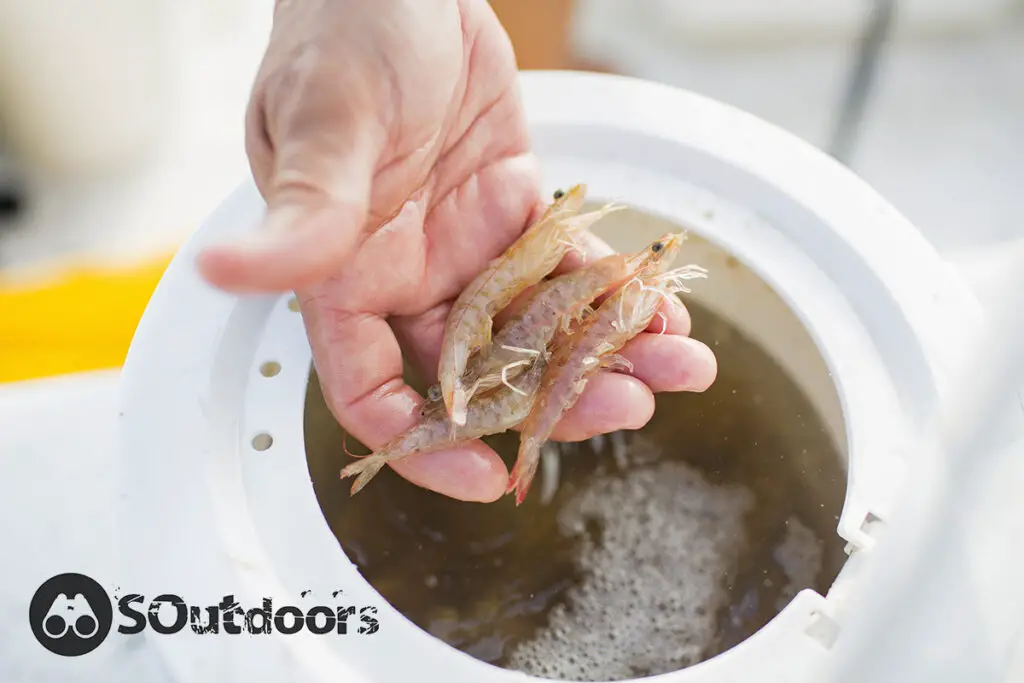
- Use live freshwater shrimp for targeting bass, trout, and bluegill, and canned shrimp for catching catfish or bullheads.
- If hoping to catch predatory fish such as walleye or bass, use a healthy shrimp. These fish are not attracted to sickly prey, nor dead shrimp or frozen shrimp.
- Store your freshwater shrimp in an aerated bucket or a live well.
- If you opt for saltwater shrimp, shell them before using them. Their shells are much harder than those of freshwater shrimp.
- If you are targeting bluegills, use tiny shrimp or divide a big shrimp into several parts. A full-sized shrimp is too big for small bluegill’s mouth. The opposite is true for catfish – they adore jumbo shrimp!
- Throwing some corn or burley meal into the water can help you up your odds of success. It will attract fish from as far as ten yards around. One of them is bound to get hooked to your shrimp.
- It is best to add a trailer hook when you use meatier chunks of frozen shrimp. In this way, you’ll prevent fish from stealing your bait without getting hooked.
Saltwater Fishing With Shrimp
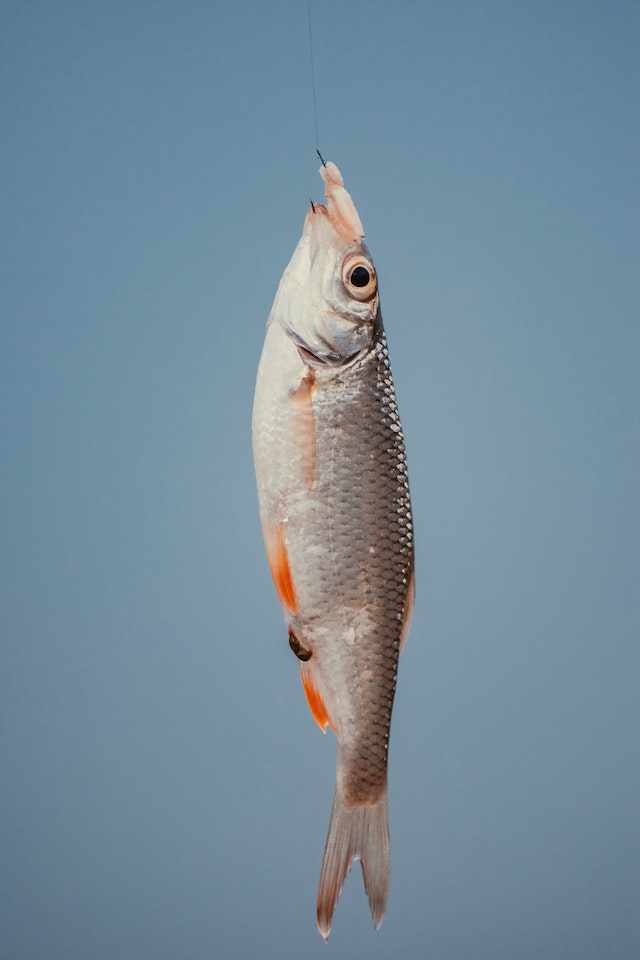
Saltwater fishing with shrimp is highly popular among anglers, especially those living on the coast of the Gulf of Mexico and Florida, or up the East Coast. You too can join the frenzy and use shrimp to catch almost any saltwater fish – all you need is a little bit of know-how.
What Kind Of Shrimp Should You Use For Saltwater Fishing?
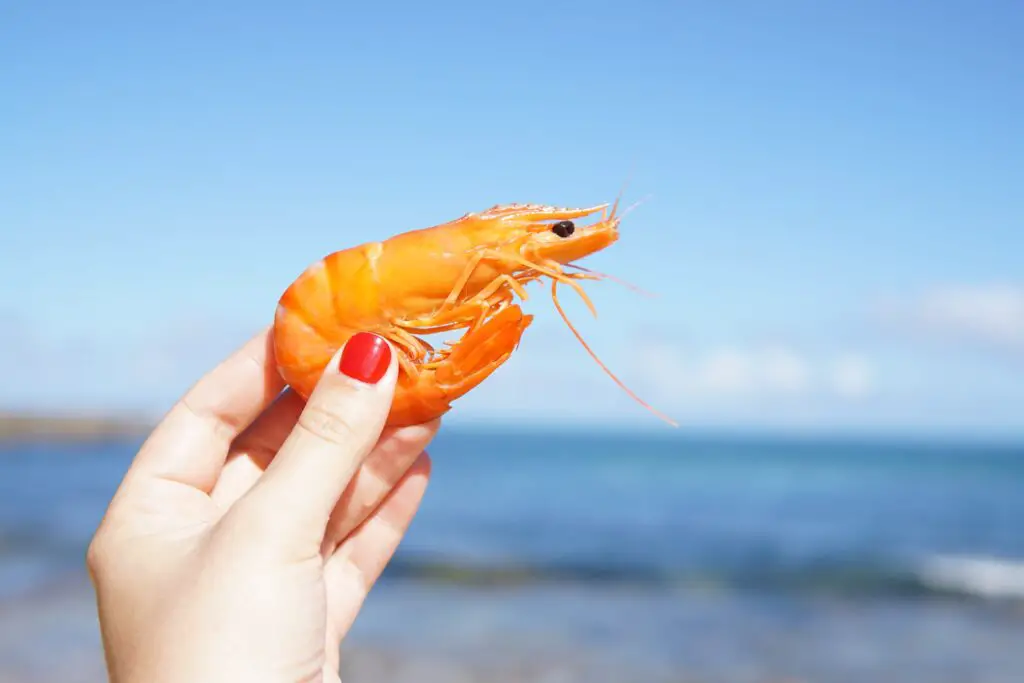
There is no doubt that shrimp are one of the most productive saltwater fishing bait. The fact that they are naturally abundant throughout the inshore saltwater areas on both sides of our coast (and so easy to catch!) is one of the reasons behind this trend. Besides, you can purchase shrimp in almost any shop.
Just like their freshwater relatives, saltwater shrimp can be used as dead bait and live bait. If you opt for the latter, you can go shrimp baiting on your own. Shrimp are bottom-dwellers and can be found on the seabed at depths of 125 to 250 feet.
The larger the shrimp on your hook, the larger the fish you can catch. So, make sure you bring a shrimp that is big enough (or small enough) for the saltwater species you plan to target.
You can use freshwater shrimp for saltwater fishing, but it should be your final resort. Saltwater predators’ diet does not normally include freshwater shrimp, so stick to the saltwater shrimp whenever possible.
Many anglers opt for artificial lures, too. Even though most of the time, plastic lures aren’t as good as the real thing, soft plastic shrimp can sometimes even outfish live bait.
What Saltwater Fish Can You Catch With Shrimp?
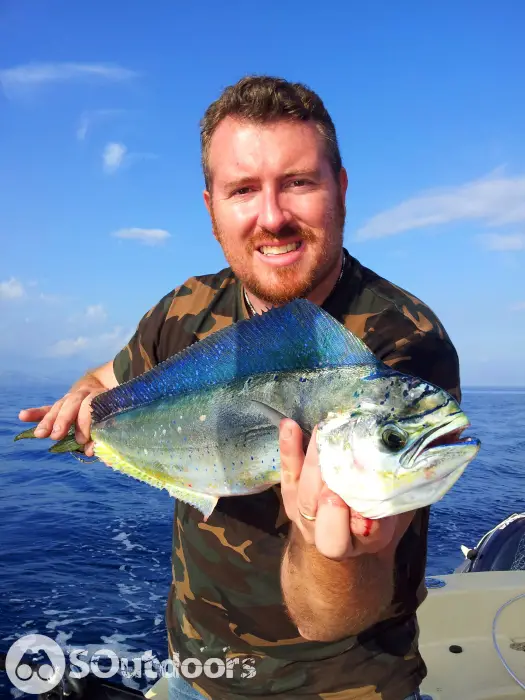
Any gamefish will want to eat a live shrimp. Hence, using a live shrimp can bring you a lot of success when targeting some of the following saltwater species:
- Redfish
- Seatrout
- Tarpon
- Snook
- Bonefish
Frozen shrimp can sometimes bring you as many fish as fresh or live shrimp. However, so-called sports fish, such as seatrout, are attracted to live, moving bait only. Fish that do not mind a peeled frozen shrimp are:
- Whiting
- Black drum
- Flounder
- Grouper
- Jackfish
- Pompano
- Sheepshead
In general, frozen shrimp are better at attracting bottom feeders. Therefore, they are a better choice for bottom fishing.
When & How To Use Shrimp For Saltwater Fishing?
You can use shrimp as saltwater bait for fishing from a shore, bridge, pier, or boat. However, when out on the sea, you must consider daily tide fluctuations. Checking the daily tide chart can help you determine the best saltwater fishing times and areas.
In general, it is better to go saltwater fishing with shrimp when tidal movement is more pronounced. When water is moving, baitfish and crustaceans are moving as well, and thus so are the predatory fish you aim to catch.
The best time to fish shrimp is during a strong incoming tide. At this time, strong currents bring baitfish and crustaceans toward the shore. The fish that feed on them start cruising the area, too, making this an ideal time for you to hook them.
How To Hook Your Shrimp For Saltwater Fishing?
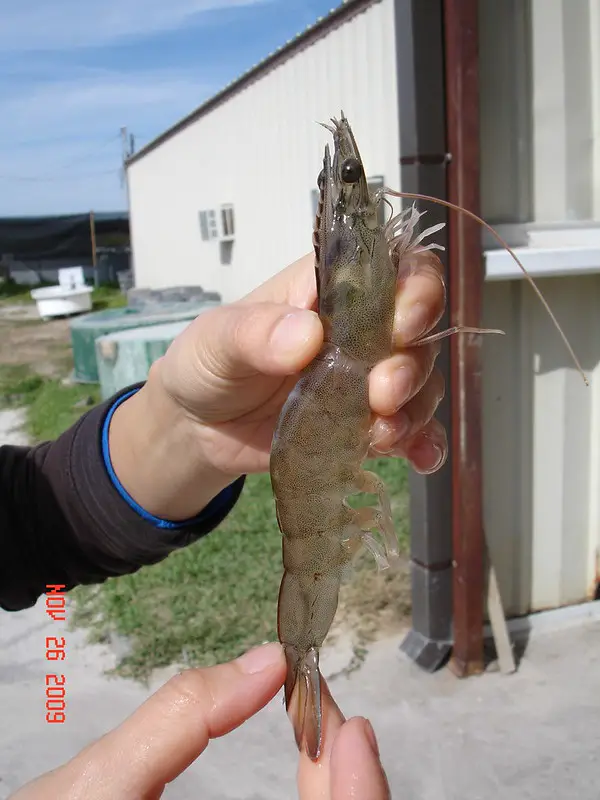
There are a few different techniques for hooking and fishing live shrimp and dead shrimp when fishing in saltwater. Let’s see what those are.
- Hooking live shrimp through the head
If you hook a shrimp in its head, it can still move its tail freely, thus attracting more game fish and triggering more strikes. As long as you do not pierce through the shrimp’s brain (a small black spot), the shrimp will remain alive – just as you needed it to be.
Hooking the shrimp in the head is an excellent choice when free lining a shrimp. It is a natural presentation suitable for fishing near the shoreline, structures in shallow water, and close to the docks. You can also hook shrimp through the head when bottom fishing.
- Hooking a live shrimp through the tail
You can hook a live shrimp through the tail when you do not want it to move too much. It is usually effective for fishing deeper water around piers, docks, seawalls, bridges,s or other similar structures.
This method can be beneficial for targeting fish in shallow water during the cold months. At such times, fish become reluctant to chase after the prey and prefer waiting for it grouped in potholes. Pinch a tail from the shrimp, hook it through the bottom, and cast it into such a pothole – the scent and slight movement of the shrimp are sure to attract the desired attention.
- Threading fresh and frozen shrimp on a hook
On some occasions, it is best to thread your shrimp on the hook. Anglers usually do this when bottom fishing or surf fishing with frozen shrimp since it helps keep the shrimp on longer.
When you thread a shrimp, the hook is completely hidden, which can be an asset when fishing in clear water. It can also be beneficial when fishing very close to the structure since the shrimp is unable to move or swim away.
- Tipping a jig with live shrimp
You can combine live bait with an artificial lure by tipping a jig with live shrimp. All you need to do is place a small piece of shrimp (pea size) onto the tip of a hook, and its smell will attract fish. Moreover, once a fish bites your bait, the taste of the shrimp will make it hold on to it longer.
Watch the following video to learn more about rigging the shrimp for fishing in saltwater:
The Best Tips For Saltwater Fishing
- Since inshore saltwater fishing is much more productive with live shrimp, you must make an effort to keep your shrimp alive for as long as possible. It is not a difficult task during cooler months when water is cold and well-oxygenated. During warmer months, you need to use some type of portable aerator.
- If you plan to work a deeper cover or deep water holes, you can present your live shrimp on a jig head, too.
- You can try fishing a live shrimp under a popping cork which emits a loud popping sound and attracts more gamefish.
FAQs
Where do you hook a shrimp for fishing?
You can hook a shrimp for fishing in multiple ways. Most often, anglers hook shrimp through their head or tail. You can also thread a shrimp onto the hook or tip a jig head with a piece of shrimp.
Is shrimp a good bait for fishing?
Shrimp is a good bait for fishing. Shrimp are highly popular, versatile, and effective. You can use them for saltwater and freshwater fishing to target the most favored game fish such as trout, bass, catfish, redfish, tarpon, etc.
Are Frozen shrimp good for fishing?
Frozen shrimp are good for fishing. When rigged properly, and offered to the right type of fish, they can even outfish the live bait. They are best for bottom fishing and surf fishing.
Final Thoughts
I hope this article on saltwater and freshwater fishing with shrimp can help you and your fellow anglers catch more fish. If you have any questions or suggestions, let me know in the comment section, and I’ll do my best to respond as quickly as possible.
